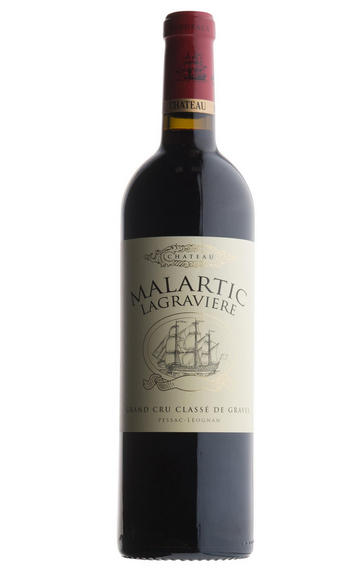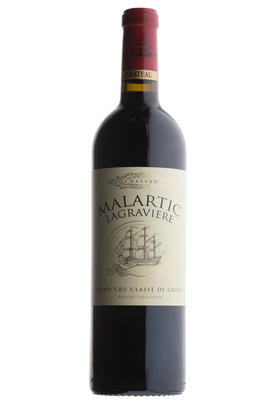
2006 Ch. Malartic-Lagravière, Rouge, Pessac-Léognan

Critics reviews
Neal Martin - 30/05/2016
About this WINE

Chateau Malartic Lagraviere
Château Malartic-Lagravière, a Cru Classé de Graves,was previously owned by the Champagne house, Laurent- Perrier - in 1997 it was bought by a Belgian couple, Michele and Alfred-Alexandre Bonnie, whose son and daughter-in-law, Jean-Jacques and Severine, have now assumed control.
There are 47 hectares of under vine, but only 7 of which are dedicated to white grapes, situated on a fine gravel ridge and now almost encroached on by the suburban outgrowth of Léognan. The estate produces high quality reds as well as tiny amounts of Sauvignon Blanc-dominated white wine. The red is a blend of 50% Cabernet Sauvignon, 25% Merlot and 25% Cabernet Franc.
The grapes are fermented partly in wooden vats, partly in stainless steel tanks, and then spend up to 15 months in oak barrels, roughly 50% of which are new. The creation of a second wine, La Réserve de Malartic Rouge (previously known as Le Sillage de Malartic), has been a further aid to the qualitative improvement which has been steadily taking place here over the past decade or so. In recent years no more than 60% of the crop goes into the Grand Vin, far less than back in the early 1990s and testament to the dedication to the highest levels of quality displayed by the new owners.
Their red wines are discreetly elegant, well-balanced that can be austere in youth but, with age, develop complexity and a distinct mineral character that is shared by all the great clarets of Pessac-Léognan.

Cabernet Sauvignon Blend
Cabernet Sauvignon lends itself particularly well in blends with Merlot. This is actually the archetypal Bordeaux blend, though in different proportions in the sub-regions and sometimes topped up with Cabernet Franc, Malbec, and Petit Verdot.
In the Médoc and Graves the percentage of Cabernet Sauvignon in the blend can range from 95% (Mouton-Rothschild) to as low as 40%. It is particularly suited to the dry, warm, free- draining, gravel-rich soils and is responsible for the redolent cassis characteristics as well as the depth of colour, tannic structure and pronounced acidity of Médoc wines. However 100% Cabernet Sauvignon wines can be slightly hollow-tasting in the middle palate and Merlot with its generous, fleshy fruit flavours acts as a perfect foil by filling in this cavity.
In St-Emilion and Pomerol, the blends are Merlot dominated as Cabernet Sauvignon can struggle to ripen there - when it is included, it adds structure and body to the wine. Sassicaia is the most famous Bordeaux blend in Italy and has spawned many imitations, whereby the blend is now firmly established in the New World and particularly in California and Australia.


Buying options
Add to wishlist
Description
Tasted at Bordeaux Index's annual 10-Year On tasting in London. The 2006 Château Malartic-Lagravière has a well-defined bouquet with blackberry, blueberry and violet scents. I appreciate the control and precision on display here. The palate does not quite match the quality of the nose, although it still offers pleasure: blackberry and subtle spicy notes, quite steely in the mouth with a vivid but linear, black cherry and boysenberry finish. With time, hints of pencil lead evolve in the glass and become more prominent on the finish. Drink now and over the next decade.
Drinking window: 2016-2026
Neal Martin, The Wine Advocate, 30th May 2016
wine at a glance
Delivery and quality guarantee